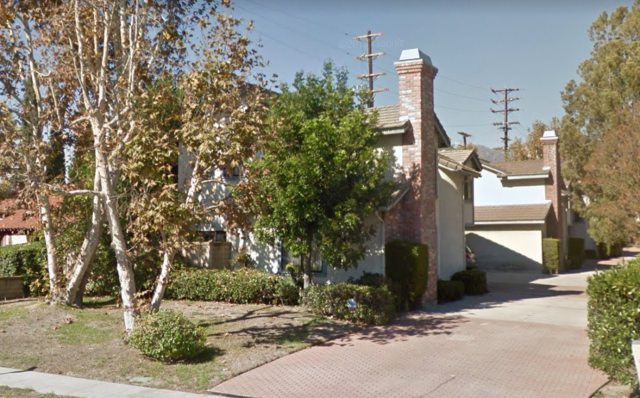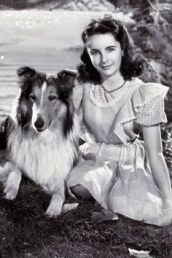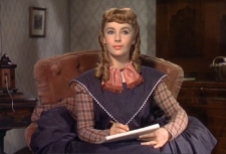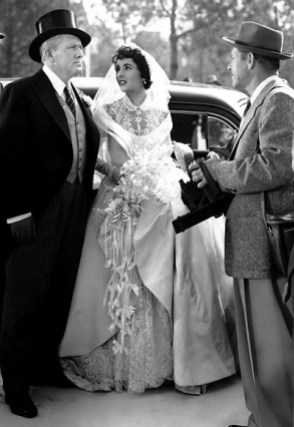
“I don’t entirely approve of some of the things I have done, or am, or have been. But I’m me. God knows, I’m me.” –Elizabeth Taylor
While there are many actresses of the screen that have charmed audiences for generations, one violet-eyed brunette, in particular, cemented her legacy as a Hollywood icon from a young age. Elizabeth Rosemond Taylor initiated her career as a child actress and quickly rose to popularity as a teenage star. Soon enough, she would transition smoothly into adult roles, receiving high praise and much critical acclaim for her skills as an actress. Along the way, she became an accomplished businesswoman and deeply passionate humanitarian, remaining a celebrity until the end of her life.
Born to socially affluent parents in London, Elizabeth received dual British-American citizenship. Her father, Francis Lenn Taylor, was an art dealer, while her mother, Sara Sothern, was a retired stage actress. Both of her parents were originally from Arkansas City, Kansas, but moved to London to open an art gallery in 1929. Their first child, Howard Taylor, was born that year. Elizabeth’s birth followed on February 27th, 1932.
Elizabeth attended Byron House, a Montessori school in Highgate, and was a raised as a Christian Scientist. She and her family lived at Heathwood, the family home on 8 Wildwood Road, in Hampstead Garden Suburb, London. Given the fact that her parents owned an art gallery, she would cross paths with notable artists and politicians throughout her childhood.
As the tensions of World War II approached, the Taylor family returned to the United States. In April of 1939, Sara took the two Taylor children to Pasadena, California, so that they could live with their maternal grandmother. Francis closed his London gallery and joined his family a few months after their departure, opening a new gallery in Los Angeles the following year. The family moved to the Pacific Palisades, San Gabriel, and to Beverly Hills, where the Taylor children attended Hawthorne School.
While living in California, Sara was constantly encouraged to have Elizabeth audition for film roles. Elizabeth’s eyes, in particular, were such a stunning shade of blue that they almost seemed violet. Due to a genetic mutation, dark double eyelashes outlined Elizabeth’s eyes dramatically. Though Sara was initially wary of having Elizabeth appear in films, she was eventually persuaded otherwise because she wanted her family to adapt fully to their new life in America. In the meantime, Francis’ gallery was bustling, thanks to Hedda Hopper’s endorsement of it in her gossip column. Elizabeth soon auditioned for positions at Universal Pictures and Metro-Goldwyn-Mayer and was offered contracts from both studios; however, Sara accepted the contractual offer from Universal for her daughter.
Unfortunately, Elizabeth’s first and sole film role working with Universal occurred in There’s One Born Every Minute (1942). Luckily, MGM producer Samuel Marx was a friend of Francis’ and coordinated an audition for Elizabeth in Lassie Come Home (1943), since the role called for a young actress with an English accent. Soon after, Elizabeth appeared in Jane Eyre (1943) and The White Cliffs of Dover (1944).
Elizabeth’s first starring role was as Velvet Brown in National Velvet (1944) at the age of 12, but MGM wanted to groom her as one of their stars. Since she was considered too short for the role, the studio delayed filming for months so that she could both practice riding and have time to grow. While Elizabeth and her parents refused the studio’s demands to dye her hair, change the shape of her eyebrows, and rename her “Virginia,” she did have to wear braces to realign her teeth. National Velvet was a major success and Elizabeth found herself enmeshed in studio life.
During the day, Elizabeth attended school and filmed scenes at the studio. In the evenings, she was expected to rehearse, in addition to taking classes in singing and dancing. While Elizabeth worked to grow as an actress, the studio capitalized on her success her by approving designs for Elizabeth-themed paper dolls and coloring books. Elizabeth grew up before the camera, portraying teenagers going through normal life, though her own experience as a teenager was quite different. Her final teenage role was as Amy March in Little Women (1949).
When Elizabeth turned 18, she began to take on more adult roles, starting with Conspirator (1949). The following year, she married Conrad Hilton, Jr. in a very publicized ceremony organized by MGM. Although the marriage was brief, it happened to be perfect publicity for Father of the Bride (1950), which was a hit and was quickly followed by the sequel, Father’s Little Dividend (1951). Shortly after, George Stevens’ A Place in the Sun (1951) challenged Elizabeth’s acting abilities, allowing her to shine in a far more dramatic role.
Now married to British actor Michael Wilding and pregnant with her first child, Elizabeth experienced financial needs and signed a new contract with MGM. Under her new contract, she starred in dramatic films such as Rhapsody (1954), Elephant Walk (1954), Beau Brummell (1954), and The Last time I Saw Paris (1954). As television competed with the film industry, Elizabeth was able to take on roles that she found far more interesting, which led her to receive much critical acclaim. She starred in the epic drama Giant (1956), Raintree County (1957), and Cat on a Hot Tin Roof (1958). While Cat on a Hot Tin Roof is recognized as one of her best films, behind the scenes, she was suffering the turmoil of having lost her third husband, producer Mike Todd, in a plane crash. Elizabeth drew from the pain of her loss and pressure to pay her debts throughout her performance as Maggie.
Elizabeth’s personal life received more public attention when she began an affair with singer Eddie Fisher, who was married to Debbie Reynolds at the time. MGM used the scandal as part of their publicity for Cat on a Hot Tin Roof, featuring Elizabeth wearing a negligee on the film’s promotional posters. Elizabeth’s performance in the film earned her an Academy Award nomination and she married Eddie Fisher in 1959. During this time, she converted to Judaism and became a supporter of various Jewish and Israeli causes.
Elizabeth continued to work in dramatic roles in films such as Suddenly, Last Summer (1959) and BUtterfield 8 (1960). She won the Academy Award for Best Actress thanks to her performance as prostitute Gloria Wandrous, though she resented the film for perpetuating the media’s scandalous image of her.
Upon the completion of her MGM contract, Elizabeth worked for 20th Century-Fox as the title character in Cleopatra (1963). She starred alongside Richard Burton, with whom she began an affair, and the two worked on what would become the most expensive film made to up to 1963. She starred with Burton once again in The V.I.P.s (1963), after which she and Burton divorced their spouses and married one another.
Of her many relationships, the romance Elizabeth shared with Burton is likely the most famous. Not only did they divorce and remarry, but they also starred with one another in several films throughout the 1960s. Their films included The Sandpiper (1965), Who’s Afraid of Virginia Woolf? (1966), Doctor Faustus (1967), and The Taming of the Shrew (1967), among several others. In total, Elizabeth and Burton worked together in 11 films.
By the end of the 1960s, Elizabeth’s film career was declining. Though she remained active as a film actress, her films were not as successful as her past projects had been. Elizabeth and Burton divorced again, and Elizabeth took on fewer roles in order to focus on supporting the career of politician John Warner, her sixth husband. While her film career was waning, Elizabeth continued to practice her craft through various stage and television cameo roles. She also made several appearances in made-for-television films.
In addition to exploring new mediums as an actress, Elizabeth found herself a key participant in HIV/AIDS activism. Frustrated to see little being done about the disease, she became one of the first celebrities to participate in the cause and raised more than $270 million for the cause. She hosted the first AIDS fundraiser to benefit AIDS Project Los Angeles and co-founded the National AIDS Research Foundation after her friend and former co-star Rock Hudson publicly shared that he was dying of the disease. During this time, Elizabeth married her final husband, construction worker Larry Fortensky. Elizabeth sold the photos from the private wedding for $1 million, which she used to begin her AIDS Foundation.
This foundation merged to create the American Foundation for AIDS Research, which focuses on funding research on HIV/AIDS. Elizabeth also founded the Elizabeth Taylor AIDS Foundations to raise awareness and provide support services for individuals living with HIV/AIDS. She also founded the Elizabeth Taylor Medical Center in order to offer free HIV/AIDS testing. Moreover, she was active on the political scene, testifying before the Senate and House for the Ryan White Care Act and persuading President Ronald Reagan to acknowledge the disease for the first time in a speech.
As her health declined, Elizabeth became more removed from the public scene. She struggled with addiction to alcohol and prescription medicines. Additionally, she had difficulty with managing her weight smoked heavily. She was diagnosed with congestive heart failure in 2004 and passed away at the age of 79 on March 23, 2011. A private Jewish ceremony was held at Forest Lawn Memorial Park in Glendale, California. As requested by Elizabeth, the ceremony began 15 minutes late, and she was entombed in the Great Mausoleum.
Today, a few places of relevance to Elizabeth’s early years and activism continue to exist. Her home, Heathwood, remains standing on 8 Wildwood Drive in Hampstead Garden Suburb, London, and is privately owned. The home has a plaque in front of it that reads “Heathwood.” Elizabeth Taylor was a patron of the centenary celebrations for Hampstead Garden Suburb held in 2007, and sent the following greeting to them:
“The happiest days of my youth were when my brother and I would run through the woods and feel quite safe. I wonder whether it’s still like that now. I do hope so. It was heaven for this child and her brother.” Elizabeth requested an additional plaque noting that she was born at Heathwood. While the English Heritage organization refused to bend their dead-for-20-years rule, Hampstead Garden Suburb stepped in to help secure the plaque.
Although Byron House Montessori no longer functions as a school, a plaque honoring Poet Laureate and fellow Byron House student marks the location at 12 North Road in Highgate.
Hawthorne School, where Elizabeth received formal education in the United States, continues to exist at 624 N. Rexford Drive in Beverly Hills, California.
According to census records, Elizabeth lived at 1719 Fairview Ave in San Gabriel, California. The property remains residential to this date.

Furthermore, the Elizabeth Taylor AIDS Foundation’s efforts continue on to this day.

While Elizabeth’s legacy continues to live on through her family, foundations, and fashions, certainly take a moment to celebrate Elizabeth’s legacy through her films.
This post originally appeared in Annette’s Hometowns to Hollywood column for TCM Backlot. View the original article here.
































































































Pingback: Grauman’s Chinese Theatre Forecourt | Hometowns to Hollywood
Pingback: Banished From Memory | Hometowns to Hollywood
Pingback: Columbia Pictures, MGM, and Sony Tour | Hometowns to Hollywood
Pingback: Warner Brothers Classic Tour | Hometowns to Hollywood
Pingback: Forest Lawn Memorial Park–Glendale | Hometowns to Hollywood
Pingback: Robert Taylor: Male Beauty, Masculinity, and Stardom in Hollywood | Hometowns to Hollywood
Pingback: TCM Film Festival 2021 Picks | Hometowns to Hollywood
Pingback: Clarence Brown: Hollywood’s Forgotten Master | Hometowns to Hollywood
Pingback: Debbie Reynolds | Hometowns to Hollywood
Pingback: Gary Cooper: Enduring Style | Hometowns to Hollywood